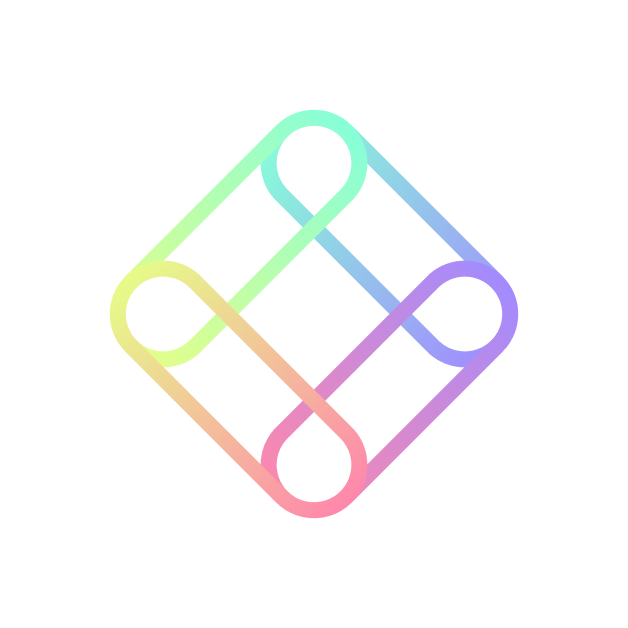Community-Led Growth: What Is It & Why Is It Important for Business Growth?
Every brand has a community. Whether you have 10 customers or 10 million, there are people out there who hold a passion for what you do and would love to share it with the world. Activating the connection power of these people, placing them front and center and empowering them to share that passion with […]

Every brand has a community. Whether you have 10 customers or 10 million, there are people out there who hold a passion for what you do and would love to share it with the world.
Activating the connection power of these people, placing them front and center and empowering them to share that passion with the people around them, is all part of a strategy more widely known as community-led growth.
But what exactly is community-led growth and why are so many marketers and community leaders using it as a growth strategy?
To understand that, we first need to define the term and examine the state of the business market today.
→ Start your journey toward community-led growth with our playbook here. ←
What is community-led growth?
Put simply, community-led growth, is a model that puts community at the centre of business growth. A new way to connect with customers that grabs attention and makes a lasting impression.
Community-Led Growth might be a tactic you’re unfamiliar with, but it’s gaining a lot of traction and you’ll be hearing about it more and more. Especially in sectors that are heavily reliant on customer retention as a way to drive growth such as SaaS and publishing.
It helps brands in several ways:
- Boosting product adoption.
- Reducing customer churn.
- Promoting a product and recommending it to their peers, and increasing NPS scores
- Driving engagement by coming together online to share best practices, content, success stories, and discussions.
- Providing feedback to a brand about its products, services, and marketing or sales strategies.
The beauty of community-led growth is that it is mutually beneficial to both brand and customer. For the brand, it creates a network of enthusiastic customers that will influence others considering making a purchase, driving acquisition and growth.
For those customers, being community members extends the value of the product or service in question, giving them the ability to learn asynchronously and in tandem with their fellow customers. This extends CLV (customer lifetime value) and can have a healthy impact on a brand’s ARR (annual recurring revenue).
From funnel to flywheel
The growing popularity of community-led growth stems from the changes that have affected the business market over the last few years.
The funnel metaphor has traditionally defined most marketing strategies, focusing on optimizing every step of the purchasing process — from awareness and discovery to evaluation, engagement, conversion/sales, loyalty, and advocacy. People are pushed along the funnel in a linear fashion.
As the way customers interact with brands has evolved, the funnel metaphor has become less apt for describing the customer journey.
There is less of a definitive end point to the relationship than there once was; brands now understand the importance of nurturing leads even after they have converted to customers in order to build loyalty and extend CLV. Which is why we have our own flywheel to explain the journey prospects and customers go on once they’ve signed the dotted line.
The four stages of the customer-led growth flywheel are:
- Acquisition – your prospect becomes a customer and begins to use the product or service you offer
- Adoption – your customer embeds the product into their work or life, regularly using it and knowing how to use it.
- Retention – you continually support your customer’s use and adoption so that they continue to be a customer
- Advocacy – the customer recommends the brand to their peers, beginning the cycle again with another member of the brand’s target audience

A community doesn’t push people towards a binary endpoint. Instead, it creates an environment so compelling that it naturally attracts people toward its center (converting and advocating).
This process is better represented using the flywheel pictured above; by continuing to engage, retain and grow customers long after the initial transaction, these customers can become advocates who go on to advocate on behalf of your brand to others.
The funnel becomes a virtuous circle, lowering acquisition costs and putting community front and center.
Driving growth in SaaS & Technology
The market for many SaaS/ Technology organizations is saturated and fragmented. Often, when first searching for a solution they can become overwhelmed with the choice and noise in the market. A community cuts through this with real-world, real-time success stories from their peers.
For organizations looking to drive a wider transformational change (either across a business or industry-wide) a community is even more important. Influencing a prospect’s behavior is a lot easier when they see their peers achieving success by changing a process or using a new tool.
B2B Marketing’s community, Propolis, is a great example of the impact that Community-Led Growth can have. Recognising that traditional advertising and events weren’t growing the business as quickly as B2B Marketing needed, it launched an online community for B2B marketers. It provides real-time expertise, collective intelligence and peer-to-peer benchmarking. It uses the community to create value and trust, which in turn spurs growth. Propolis is now at the centre of B2B Marketing’s growth and feeds into its events, content, courses and more.
Communities also provide value to customers after they’ve purchased by showing them how to get maximum value from a product and keeping them updated with new features. Users join the community, share ideas with their peers, become champions of the brand, and then attract new prospects, who then convert and join the same community.
Your community-led growth strategy
The foundation to your community-led growth is having a distinct strategy that operates in tandem with, but separate from your marketing strategy. Like any other strategy, your community-led growth strategy needs to have goals, responsibilities, tactics, and success measures.
It’s important to consider how the community will operate alongside your organization. There needs to be permeable boundaries between the community and other parts of your company, to avoid the community drifting off on its own and becoming disconnected from your business’ goals and success.
If you need help putting together a community-led growth strategy, you can use our strategy generator. Using Zapnito’s frameworks and AI, we will create a 9 page inspiration document to help you leap from blank page to plan of action.
The business impact of a community-led growth strategy
Everyone knows the power of word of mouth marketing and that social proof is the best way to win new business. People trust people more than they do brands. That’s why communities are such a powerful marketing tool.
But they also offer a continuous feedback loop for product development, they help onboard new customers without taking up more of customer success’s time, and the community can give insights that help sales connect with the concerns of prospective customers.
Community led growth leads to:
- Shorter sales cycles
- Reduction in customer churn
- Faster product adoption
- Upsells in packages
- Customer generated testimonials and use cases
And all of that can add up to considerable ROI.
How to advocate for communities in your business
You’re bought into the idea that community-led growth can work for your business. But you need to get your key stakeholders on board too.
To do that, you need to:
- Build a case for community based marketing
- Communicate the opportunity clearly to stakeholders
- Show how the opportunity links to company goals across customer success, marketing, product, and sales
- Address concerns and questions that might come up
Your business case for online communities needs to be based on how it bolsters retention and provides crucial information to the product team for product updates and development.
You also need to show that as the community grows, you’ll have loyal advocates of your brand that generates new business.
The best way to do that is by demonstrating ROI, showing how you’ll measure engagement, and in what ways sales, marketing, product, and customer success will benefit from the community.
Bring all of your stakeholders together in a call or meeting and present your case. Make sure you communicate what resources you’ll need to effectively implement community-led growth and what timeline you expect to see results.
Finally, present your preferred community platform and why the features of that platform are best suited to assist your growth.
If you need help selling Zapnito internally, we can help you make a compelling deck that showcases the benefits and outcomes of community-led growth effectively. Just get in touch!
Communities could be your most valuable asset
Communities are fast becoming an organization’s most valuable asset. Why? Because they connect us more deeply with each other, with brands, and with purpose.
We are seeing a societal shift from ‘me’ to ‘we’, as recent events have sparked broader discussions on the role of organizations, employers, and individuals in driving positive changes for all. Organizations that put community at the core of their business strategy will beat those that don’t.
This rings particularly true for high-growth start-ups and SaaS companies. Having an engaged and loyal community can provide a valuable, sustainable go-to-market strategy.
Indeed, the likes of Mural, Notion, Lattice, and Seven Seven Six have signed pledges naming communities as “a company’s most valuable asset”.
Zapnito enables and improves customer acquisition and retention in your business through an engaged community. To find out how, book a demo and we’ll be in touch.
FAQs
What is community-led growth?
Community-led growth is where businesses build a community of their customers to engage and retain them while attracting more.
Businesses who use community-led growth engage with their community members, turning them into advocates and contributors to the brand’s growth.
Why is community-led growth important for businesses?
Community-led growth is crucial because it fosters genuine relationships between businesses and their customers.
This approach not only builds trust and loyalty but also creates a feedback loop, allowing businesses to better understand and cater to their customers’ needs, leading to sustained growth.
How can businesses achieve better community-led growth?
Businesses can enhance community-led growth by actively engaging with their community members, providing valuable content, and creating spaces for open dialogue.
A platform like Zapnito can facilitate this by providing community spaces that host learning materials, connect community members to the content they need, allow for user-generated content to be created, and even provide data and analytics to inform your community strategy going forward.
By fostering a sense of belonging and valuing members’ input, businesses can turn their communities into powerful growth engines.
If you’d like to learn more about how the Zapnito platform can help your business power community-led growth, book a demo call today.
